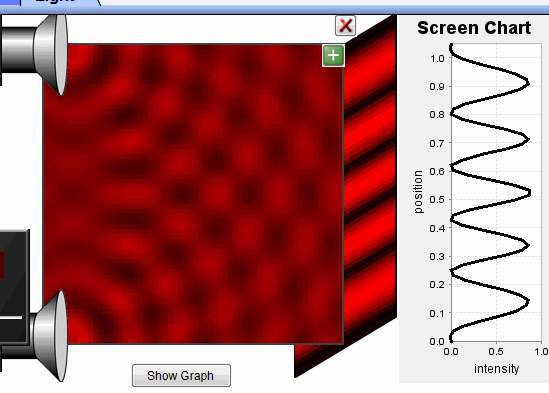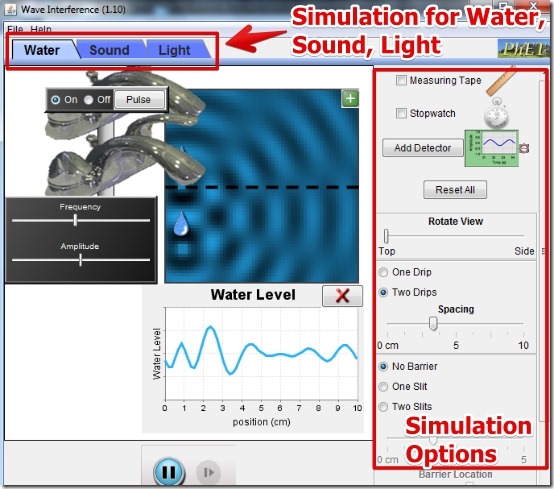Wave Interference is free software to learn about the basic concepts of wave interference of water, sound, and light.
Wave Interference software lets you simulate the wave interference of light and sound waves and see their behavior upon interacting with slits (of different lengths) and with each other. Basically, wave interference is the change in pattern of the waves which is the result of the interaction of their crusts and trough.
Why I like Wave Interference software is because you can very easily vary the parameters of the wave which are the frequency and the amplitude of the travelling wave. The simulation is carried in real time and you can see the wave pattern (which is differentiated by light) as you change the wave properties.
Furthermore, in order to better understand the wave interference concept, you have the option to add detectors on the travelling wave. The detectors are there to see the changing frequency of the travelling wave at that point.
Below I have posted a small simulation clip that shows wave interference of light along with the screen. You can see the fringes formed on the screen.
Note that Wave Interference Software is Java based software, so you require to have Java installed in your system.
Working with Wave Interference Software:
Wave Interference Software is really simple to use. The user interface offers the option to simulate the waves and view the interference using water, sound, and light as sources of wave.
When you launch Wave Interference Software you will have the water droplet falling from the tap in the user interface. The controls for simulation are same for all, be it water drops, sound, or light.
For controlling the simulation you have the option to select single or double wave input (taps, speakers, or light torch). You can control the frequency, amplitude, add slit and wall, select slit width, select separation between the two sources, and add detector meters.
Features of Wave Interference:
- Very simple software to use.
- Wave interference is shown for water, light, and sound.
- Simulation can be controlled for frequency and amplitude.
- Option to add slits to the waves.
- Option to add detector on the wave pattern.
- Position of the taps can be changed.
- Option to add screen for the light.
- Option to pause and play the simulation.
- Option to rotate the view for better understanding.
- Option to add walls.
You might want to try similar simulation software Energy Skate Park.
Conclusion:
Wave Interference Software is very simple software which anybody can use to learn about the basics of wave interference. What I really like is the option to add slits at different lengths. You can use this feature to study wave interference at different levels. Overall, I like using Wave Interference Software. However, there is no option to set the numerical values like that of frequency and amplitude and view the resultant value of amplitude in output waves.

